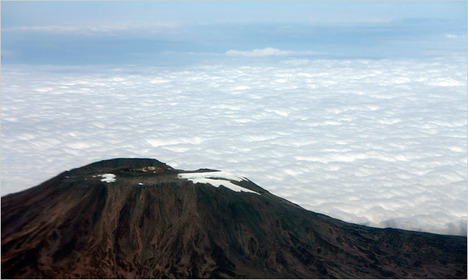(p. 3A) ANCHORAGE, Alaska (AP) — . . .
A study report published Wednesday rejects the often used concept of a “tipping point,” or point of no return, when it comes to sea ice and the big bear that has become the symbol of climate change woes. . . .
Another research group projects that even if global warming doesn’t slow, a thin, icy refuge for the bears would still remain between Greenland and Canada.
. . .
A . . . study was to be presented Thursday at the American Geophysical Union conference in San Francisco. That research considers a future in which global warming continues at the same pace.
And it shows that a belt from the northern archipelago of Canada to the northern tip of Greenland will likely still have ice because of various winds and currents.
The sea ice forms off Siberia in an area that’s called “the ice factory” and is blown to this belt, which is like an “ice cube tray,” said Robert Newton of the Lamont-Doherty Earth Observatory at Columbia University.
That “sea ice refuge” will be good for polar bears and should continue for decades to come, maybe even into the next century, he said.
For the full story, see:
AP. “Scientists: It’s Not Too Late for Polar Bears After All.” Omaha World-Herald (Thurs., December 16, 2010): 3A.
(Note: ellipses added.)
The first article mentioned is:
Amstrup, Steven C., Eric T. DeWeaver, David C. Douglas, Bruce G. Marcot, George M. Durner, Cecilia M. Bitz, and David A. Bailey. “Greenhouse Gas Mitigation Can Reduce Sea-Ice Loss and Increase Polar Bear Persistence.” Nature 468, no. 7326 (December 16, 2010): 955-58.
A poster on an earlier version of the second paper can be found at:
Pfirman, Stephanie, Bruno Tremblay, Charles Fowler, and Robert Newton. “The Arctic Sea Ice Refuge.” March 2010.
The reference to the second paper is:
Pfirman, Stephanie, Robert Newton, Bruno Tremblay, and Brenden P. Kelly. “The Last Arctic Sea-Ice Refuge?” In Presented at meetings of American Geophysical Union, December 2010.



